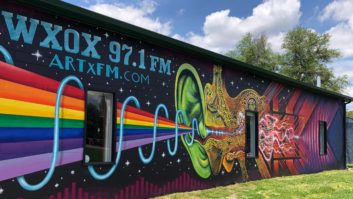Glassman Suggests Better Strategic Placement of Companies at NAB
Twenty-two consecutive NABs. (What year was it the McMartin transmitter caught fire?)
For most of them, I had exhibit management duties and always focused on the radio/audio hall. Even before NAB2004 ended, I started to think about what could help make the show better in the future.
Obviously, everyone likes a crowd. If you look down an aisle on the show floor and see mostly carpet, you are less likely to stroll down that aisle. The more action, the greater the probability that exhibitors and attendees alike will return in future years – and recommend the show to others.
The good news this year is that crowds in the radio/audio hall were larger than 2002 and 2003. Many theories were proposed: the economy is coming back; the show is no longer split between the LVCC and the Sands; HD Radio is increasing its traction; stations are ready for the next-generation digital products, etc.
Whatever your favorite theory, a busier radio/audio hall is a good thing. But it was not all good news.
Separate but equal?
Look at the NAB program directory and you find that many companies involved in radio and/or audio were exhibiting in other halls. During the third and fourth exhibit days, the North radio/audio hall had far fewer attendees than other parts of the show.
When one spends most of his or her time in the radio/audio hall, the overall attendance figures are less meaningful because most attendees don’t enter our galaxy. And while NAB has the tools to more accurately estimate show attendance based on lead-card swipe statistics, they continue to boast the inflated registration numbers that few hold credible.
For my first two decades of NAB, I was convinced that the radio and audio industries benefited from having a unique and mostly separate section. After all, how many video-post editors care about the latest FM exciter? And personally, I don’t attend NAB to buy cameras.
But times have changed, and we must change with them.
The overall space allocation of the NAB spring show ignores the consolidation of interests at the customer and technology-provider levels. Sore feet probably conquered curiosity if one was shopping for microphones, connectors and the like, which were spread all over the show. Many attendees probably missed out on many “you guys make exactly what I need” experiences because they had no reason to traverse the radio/audio hall.
And many who did pass through our territory followed the absurd “expressway” carpet that helped blind their peripheral vision as they moved from the Central Hall to the Hilton.
I am not so bold as to propose the total dissolution of a primarily radio/audio section of the show. The “restaurant row” concept comes into play: When there is only one restaurant, your decision is whether or not to dine out. When there are two or more, you decide where to eat. A smart exhibiting company wants to be near its competitors.
A practical redesign of the NAB show floor is required. Perhaps designate an area as “radio and audio focused” and put it in the middle of the action.
Redirecting traffic
A simple solution would be to populate the vacant half of the North Hall adjacent to the radio/audio hall. For many companies, this area is bound to be much more interesting than the outlands at the back of the South Halls. Just one large television or video anchor exhibitor could facilitate the flow of traffic from the North Hall to other exhibit areas.
Some of us old-timers recall when the Central Hall was home to the radio exhibitors – not an unrealistic notion for the future. We radio and audio folks can certainly live without the overly wide aisles and the “filler” booths.
Does NAB really need a “Sound Technology for Worship” pavilion three weeks after NSCA, also in Las Vegas? A “radio and audio focused” Central Hall would draw many companies whose products cross over between markets to exhibit closer to their radio and audio roots.
Whether or not you agree with the above ideas, it is apparent that the post-dot-com NAB needs to enhance the experiences of the exhibitors and attendees with an increased focus on why so many people attend: to see the new toys. There is no denying that great sessions also are a key part of the show, but what is the ratio of those on the exhibit floor to those in the meeting rooms at any given hour?
For those who have been attending and exhibiting for years, a better show is what attracts new participants. Redesigning the exhibit space to increase random traffic past the radio and audio exhibitors costs nothing, risks little and has the potential to benefit NAB and all of the audiences it seeks to serve.











